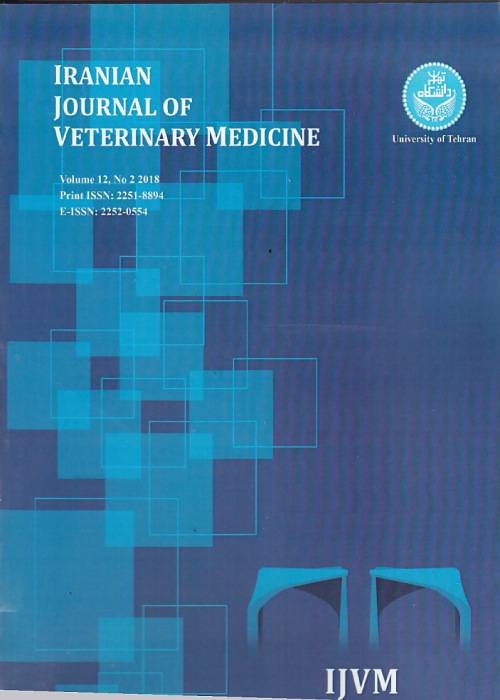Evaluation of the Effects of Adipose Derived Mesenchymal Stem Cells Cultured on Decellularized Amniotic Membrane in Wound Healing of Distal Part of the Limbs in Horse
Author(s):
Article Type:
Research/Original Article (دارای رتبه معتبر)
Abstract:
Background
Equine wounds, particularly those involving the distal portion of the limbs, often undergo prolonged complex healing and may enter a non-healing state with obvious financial and welfare implications. Poor blood supply and lower levels of oxygen to the lower limbs lead to imbalance of growth factors related to wound healing. Decellular amniotic membrane has been widely used in soft tissue engineering especially skin regeneration due to its biological and mechanical properties. It is used as a scaffold for treatment of partial full thickness wound dressing.
OBJECTIVES
Evaluation of the effects adipose derived mesenchymal cells (ADMSCs) cultured on decellularized amniotic membrane (DAM) in wound healing of distal part of equine limb.
METHODS
Stem cells were isolated from adipose tissue in the base of the tail and then cultured and seeded on bovine decellular amniotic membrane. Full thickness excision wounds (2x3 cm) were created on the mid-lateral of all metatarsus of each horse aseptically. The wounds were classified into four groups: the first one covered by DAM seeded by ADMSCs, the second one dressed with only DAM, the third one treated with1% silver sulfadiazine, and the last one as control with no treatment. Digital photographs of wounds were obtained at each bandage change while biopsy samples were obtained for histopathology at days 5, 15 and 30 after treatment.
RESULTS
Wounds treated with DAM/ADMSCs significantly demonstrated promotion of wound healing in geometric analysis of total wound area, epithelialization and wound contraction compared with the other groups (P<0.05). Microscopically, re-epithelization of wounds covered by DAM/ADMSCs and DAM at day 5 was significantly more than Control group (P<0.05). Fibroplasia in wounds treated with DAM/ADMSCs and DAM was higher than the group that received sulfadiazine (P<0.05).
CONCLUSIONS
These results indicate positive effects of using DAM to improve the quality and speed of wound healing. Use of DAM as a scaffold for ADMSCs shows better results.Keywords:
Language:
English
Published:
Iranian Journal of Veterinary Medicine, Volume:13 Issue: 1, Winter 2019
Pages:
11 to 25
magiran.com/p1960604
دانلود و مطالعه متن این مقاله با یکی از روشهای زیر امکان پذیر است:
اشتراک شخصی
با عضویت و پرداخت آنلاین حق اشتراک یکساله به مبلغ 1,390,000ريال میتوانید 70 عنوان مطلب دانلود کنید!
اشتراک سازمانی
به کتابخانه دانشگاه یا محل کار خود پیشنهاد کنید تا اشتراک سازمانی این پایگاه را برای دسترسی نامحدود همه کاربران به متن مطالب تهیه نمایند!
توجه!
- حق عضویت دریافتی صرف حمایت از نشریات عضو و نگهداری، تکمیل و توسعه مگیران میشود.
- پرداخت حق اشتراک و دانلود مقالات اجازه بازنشر آن در سایر رسانههای چاپی و دیجیتال را به کاربر نمیدهد.
In order to view content subscription is required
Personal subscription
Subscribe magiran.com for 70 € euros via PayPal and download 70 articles during a year.
Organization subscription
Please contact us to subscribe your university or library for unlimited access!


